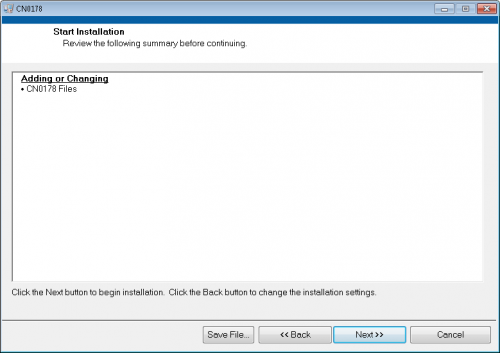This is an old revision of the document!
CN0178 Evaluation Board Guide
Overview
CN0178 is a circuit that measures the rms signal strength of RF signals with varying crest factors (peak-to-average ratio) over a dynamic range of approximately 65 dB and operates at frequencies from 50 MHz up to 9 GHz using the ADL5902 TruPwr™ detector. The measurement result is provided as serial data at the output of a 12-bit ADC. A simple 4-point system calibration at ambient temperature is performed in the digital domain.
The ADL5902 provides a solution in a variety of high frequency systems requiring an accurate measurement of signal power. It can operate from 50 MHz to 9 GHz and can accept inputs from −62 dBm to at least +3 dBm with large crest factors, such as GSM, CDMA, W-CDMA, TD-SCDMA, WiMAX, and LTE modulated signals.
The AD7466 12-bit, high speed, low power, successive approximation analog-to-digital converters (ADC). It operates from a single 1.6 V to 3.6 V power supply and feature throughput rates up to 200 kSPS with low power dissipation. The parts contain a low noise, wide bandwidth track-and-hold amplifier, which can handle input frequencies in excess of 3 MHz.
The EVAL-CN0178-SDPZ board connects to ADI’s System Demonstration Platform (SDP) and is powered by a +6 V supply or +6 V “wall wart”.

Required Equipment
General Setup
Block assignments
Test setup

-
-
With power to the supply off, connect a +6
V power supply to the pins marked “+6V” and “GND” on the board
If available, a +6 V “wall wart” can be connected to the barrel connector on the board and used in place of the +6 V power supply
Connect the
USB cable supplied with the SDP board to the
USB port on the PC
-
Launch the evaluation software
Connect the
USB cable from the PC to the
USB mini connector on the SDP board
Do not connect the USB cable to the Mini-USB connector on the SDP board before turning on the dc power supply for the EVAL-CN0178-SDPZ.
Calibration
Because the slope and intercept of the system vary from device to device, a system level calibration is required. For this board, a 4-point calibration is used to correct for some non-linearity in the RF detector's transfer function particularly at the low end.
Apply four known signal levels to ADL5902. Note that it should be well within the linear operating range of the device

Measure the corresponding output codes from the ADC
Calculate SLOPE_ADC and INTERCEPT calibration coefficients using the following equations:
This calculation is repeated using CODE2/CODE3 and CODE3/CODE4 to calculate SLOPE2/INTERCEPT2 and SLOPE3/INTERCEPT3 respectively
These will be used to calculate the unknown input power level, PIN, when operation in the field using the equation
The observed code from the ADC will be compared to the calibration coefficient codes in order to retrieve the appropriate SLOPE and INTERCEPT calibration coefficients.
Installing the Evaluation Software
Extract the file
CN0178_Evaluation_Software.zip and open the file
setup.exe.
NOTE: It is recommended that you install the CN0178 Evaluation Software to the default directory path C:\Program Files (x86)\Analog Devices\CN0178\ and all National Instruments products to C:\Program Files\National Instruments\

Click
Next to view the installation review page

Click
Next to start the installation

Upon completion of the installation of the
CN-0178 Evaluation Software, the installer for the
ADI SDP Drivers will execute.
NOTE: It is recommended that you close all other applications before clicking “Next”. This will make it possible to update relevant system files without having to reboot your computer.

Press
“Next” to set the installation location for the
SDP Drivers.
It is recommended that you install the drivers to the default directory path
C:\Program Files\Analog Devices\SDP\Drivers

Press
“Install” to install the
SDP Drivers and complete the installation of all software. Click
“Finish” when done.

Using the Evaluation Software
Main Window

-
-
SDP Connector - Selects which 120-pin connection of the SDP-B Board to use
Input Power - Indicate input signal power level
Frequency - Indicate input signal frequency
Data Acquisition Controls

Sample Data - Start acquisition of measurement data
Remove Data Point - Remove a data point from samples
Clear Data - Clear the current measurement data
Save Data - Save measurement data to file
Sample Data Graph Tab - Shows the XY plot of ADC code and output error (%) with respect to the shunt voltage

Calibration Tab
Calibration Inputs - Four point input power levels used for calibration purposes
Calibration Data - Enable calibration of the device
Calibration Coefficients - Read only. Calculated calibration coefficients based on four point input power levels
Administration Tab

Quit Button - Closes the evaluation software
Running the System
Open the CN0178.exe application from the default installation location
Set the correct connector and click the Connect Button
Upon successful connection, calibrate the device through the calibration tab
After proper calibration, set the correct input parameters and control the data measurement through the data acquisition control buttons
Click Disconnect if finished
Click Quit to exit the program
Schematic, PCB Layout, Bill of Materials
 This version is outdated by a newer approved version.
This version is outdated by a newer approved version. This version (21 Dec 2017 03:21) was approved by Trisha Cabildo.
This version (21 Dec 2017 03:21) was approved by Trisha Cabildo.









